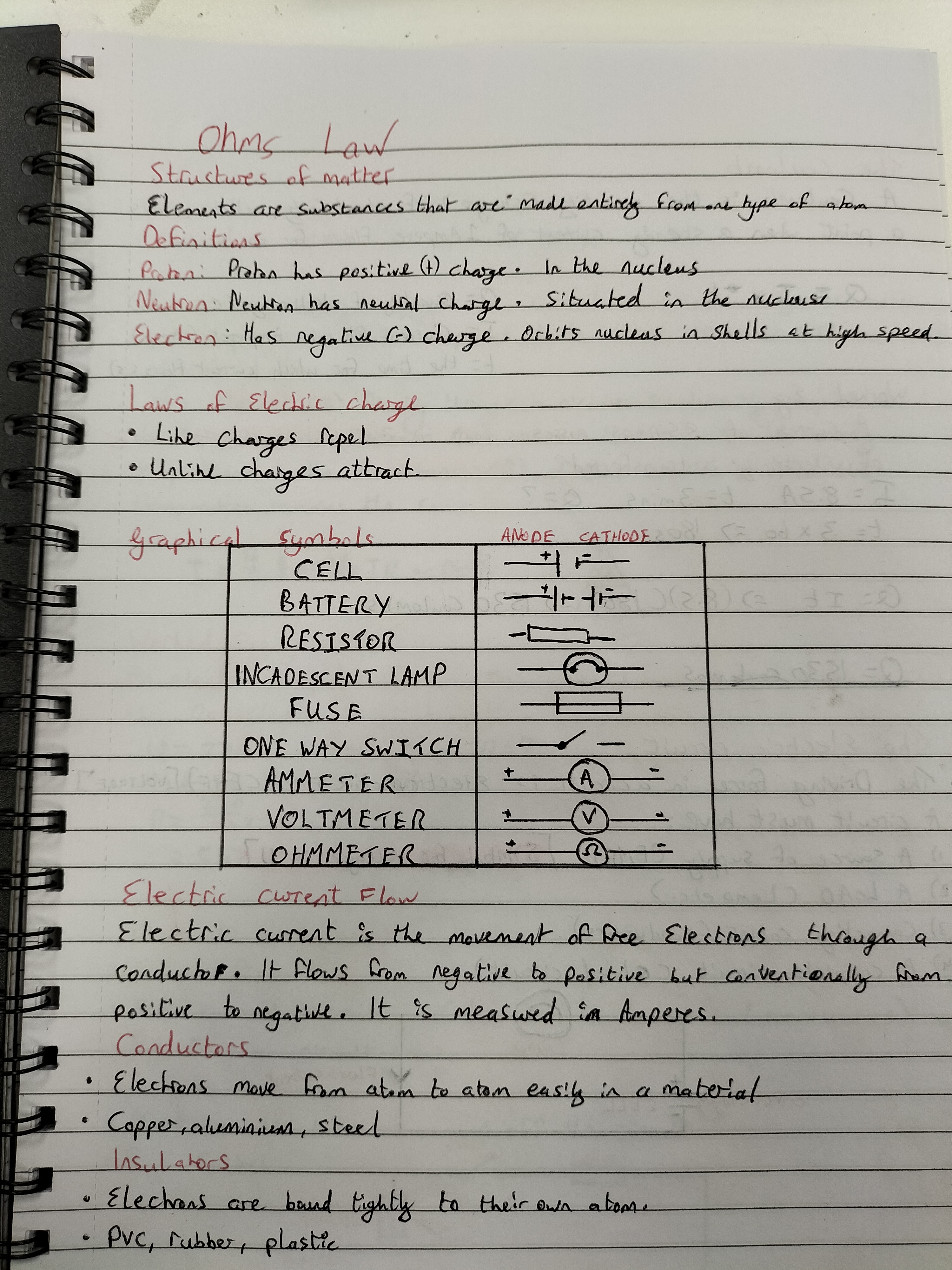What is Ohm's Law and how do electric charges and current flow work?

Understand the Problem
The question focuses on the principles of Ohm's Law, electric charge, and current flow. It includes definitions related to matter structure and laws of electric charge, alongside graphical symbols used in circuits.
Answer
Ohm's Law: V = IR; electric current flows as free electrons move through a conductor.
Ohm's Law is V = IR, which describes the relationship between voltage, current, and resistance in an electrical circuit. Electric current flows as the movement of free electrons through a conductor, from negative to positive terminals by convention.
Answer for screen readers
Ohm's Law is V = IR, which describes the relationship between voltage, current, and resistance in an electrical circuit. Electric current flows as the movement of free electrons through a conductor, from negative to positive terminals by convention.
More Information
Ohm's Law, discovered by Georg Simon Ohm, is fundamental in understanding how electrical circuits work. It helps in calculating one variable if the other two are known, enabling the analysis and design of electrical circuits.
Tips
A common mistake is mixing up the direction of conventional current flow with electron flow; remember that conventional current flows from positive to negative, while electrons move from negative to positive.
Sources
- What is Ohm's Law? - Fluke Corporation - fluke.com
- Voltage, Current, Resistance, and Ohm's Law - SparkFun Learn - learn.sparkfun.com
- Ohm's law | Physics, Electric Current, Voltage | Britannica - britannica.com
AI-generated content may contain errors. Please verify critical information